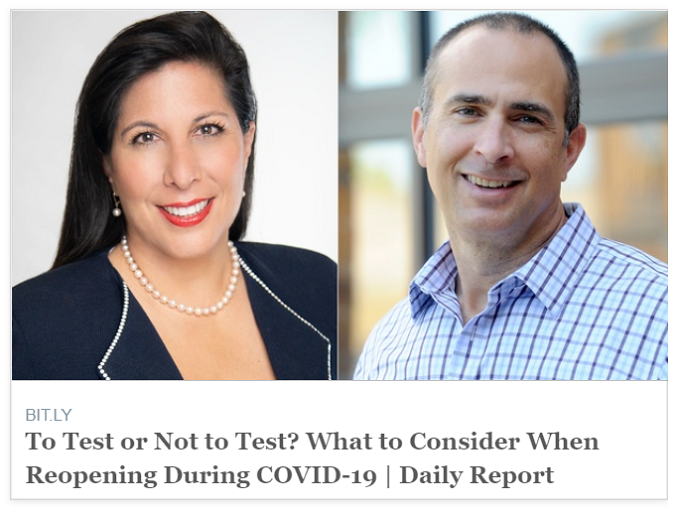
There’s no playbook for reopening during a pandemic, noted Todd Stanton and Amanda Farahany of Barrett & Farahany in a May 12 Fulton County Daily Report article they co-authored. Employers should focus on open communications and keeping employees healthy in order to avoid legal issues, wrote the attorneys.
Which Employees Should Come Back?
When reopening, making the decision on which employees to bring back could be more challenging than the original decision of who to let go, Stanton and Farahany noted. In order to avoid discrimination issues, employers should first have rehiring criteria in place, then decide which employees meet that criteria. The focus should be on job duties, not individuals, as well as on objective criteria for determining reliability and performance, noted the co-authors. “For instance, if you’ll be operating on a skeleton crew, calling back employees who are cross-trained to perform multiple jobs makes more sense than calling in someone with a more focused skillset,” they wrote.
The co-authors advised being cautious not to choose returning employees based on protected characteristics. “For example, don’t bring back only men based on your perception that female employees may have childcare responsibilities, or skip over older employees who you suppose may be more susceptible to illness,” they wrote. As an employer, even if you are looking out for an employee’s best interest you could still be accused of disparate treatment.
Communicate with employees.
Make sure your employees know there is flexibility in returning, particularly if remote work is an option, wrote the co-authors. Let employees tell you if they want to return to work and then evaluate each situation individually and appropriately. “Employees with relevant health conditions may be better off with a flexible shift, working from home, or on unpaid leave. Age alone is not a sufficient reason for staying home, but advanced age combined with a health risk (like cancer) may be,” wrote the attorneys. “Work with employees to make the accommodation, versus making the decision for them and risking a disability claim.”
Despite your best efforts, some employees may still be concerned about coming to work, Farahany and Stanton pointed out. Before reopening, take all the precautions recommended by the CDC and explain these efforts to employees. Stanton and Farahany suggested employers invite employees who feel they may be covered by the Americans with Disabilities Act, Emergency Paid Sick Leave, or Family and Medical Leave Act to come forward to discuss potential solutions and accommodations.
Should you test for COVID?
“The Equal Employment Opportunity Commission is allowing employers to test employees for COVID-19, and having a testing process in place at your facility can help minimize the chance of future employee claims,” wrote the co-authors in the FCDR piece.
The attorneys noted that employers should at least have a “scripted, consistent screening process” to ensure symptomatic employees can’t start an outbreak. Your screening process should be consistent with federal and local guidance, and be evaluated by your employment counsel.
If your screening process is insufficient and an employee with coronavirus returns to work, your company could be liable for not providing a safe workplace, the co-authors warned. If an employee could prove she caught the virus at work, workers’ compensation would be a likely (as well as insured) claim, similar to an ankle sprain or hurt back. Employers could open themselves up for other potential and more substantial claims (which may or may not be insured) if they fail to take the reasonable steps to prevent coronavirus infection in the workplace.
How to keep your workplace safe.
We all have to adapt to the “new normal,” wrote Farahany and Stanton. They noted new guidance by the Occupational Safety and Health Administration (OSHA) for reopening businesses. Employers should review and implement OSHA’s industry-specific guidelines in addition to enforcing the general guidelines for handwashing and use of personal protection equipment (PPE).
We’re all in this together.
Farahany and Stanton stressed maintaining open lines of communication. “Approach this with candor and goodwill,” they wrote. The attorneys counselled employers to be mindful of applicable employment laws and regulations. “Focus on the majority of your employees who are ready to get back to work and do a good job and we’ll deal with inevitable exceptions as they arise,” they noted. And remember, “we’re all in this together,” they concluded.
You can read the entire article on the Fulton County Daily Report web site (subscription required).